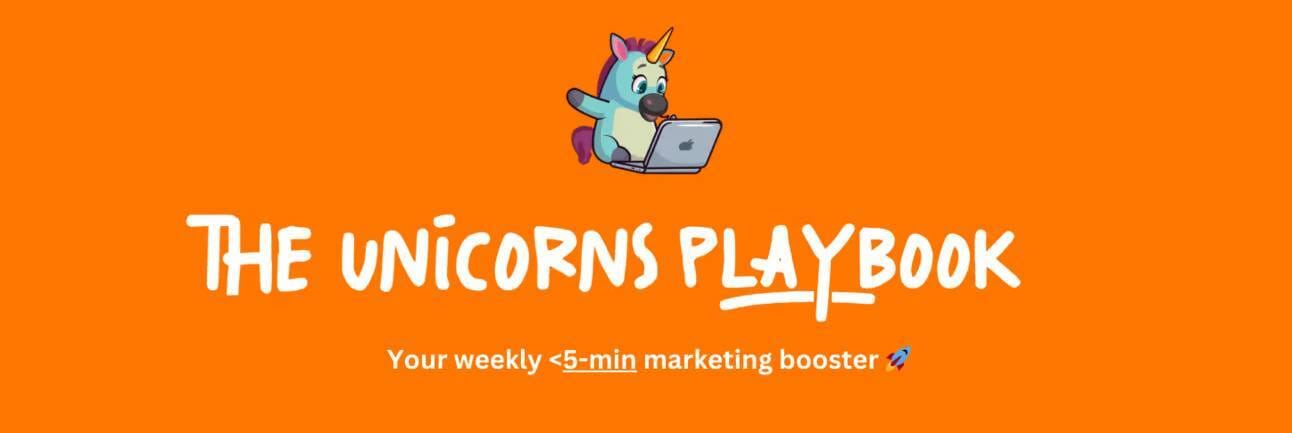- The Unicorns Playbook
- Posts
- 🦄 Uber's Growth, '10s Ads and Synesthesia in Marketing
🦄 Uber's Growth, '10s Ads and Synesthesia in Marketing
Smart Marketing in 5 minutes!

Hey there, unicorns! 👋
Get ready for another mind-expanding newsletter:
🦄 Uber's Growth Playbook: From a Snowy Night Idea to Ride-Hailing Empire From regulatory battles to cultural controversies, we're exploring how Uber disrupted an entire industry and weathered the storms of its own meteoric rise.
🧠 The Sensory Hijacking Effect: Exploiting Associative Synesthesia in Marketing Learn about the psychological principle that makes you almost taste, smell, or hear a product just by looking at an ad.
🌐 History of Advertising: The 2010s Dive into the visually sensational world of 2010s advertising, where a single image tells a thousand words and creativity knows no bounds.
Grab your favorite drink, and let's dive in!
Growth Playbook
🦄 Uber's Growth Playbook: From a Snowy Night Idea to Ride-Hailing Empire

With 131 million monthly active users and a $140 billion valuation, Uber has revolutionized urban transportation.
So, what's the secret behind their explosive growth? 🤫
Here's the TL;DR:
🌍 Democratizing Rides
By making on-demand transportation accessible and affordable, Uber disrupted the taxi industry and unlocked a massive untapped market.
🎮 Two-Sided Marketplace Mastery
Uber's ability to balance rider demand with driver supply created a powerful network effect, fueling rapid expansion.
🦠 Aggressive Expansion Playbook
Their "ask forgiveness, not permission" approach to entering new markets drove lightning-fast global growth.
📱 Frictionless Experience
Uber's user-friendly app and cashless transactions revolutionized how people think about getting from A to B.
🎢 Weathering Controversies
Despite regulatory battles and cultural missteps, Uber has adapted and continued to innovate in the mobility space.
Want to dive deeper into Uber's wild ride to the top and uncover the strategies behind their success?
Trust us; it's as thrilling as watching your Uber arrive in 2 minutes when you're running late! 🚗💨
Ad Playbook
🌟🔮 History of Advertising: The 2010s

Welcome to the decade where a single image speaks volumes, and creativity knows no bounds!
The 2010s saw advertising push the boundaries of visual storytelling, using clever imagery and minimalist design to communicate powerful messages in an increasingly cluttered digital landscape.
Let's explore some standout examples from this transformative era:
📺 MTV: "Sex is no accident"

MTV's provocative campaign uses a comic strip format to deliver a serious message about safe sex.
The ad cleverly illustrates a series of seemingly innocent scenarios that unexpectedly lead to a sexual encounter, concluding with the stark message: "Sex is no accident. Always use a condom."
This campaign exemplifies the 2010s trend toward using humor and unexpected narratives to address serious topics while demonstrating the power of sequential storytelling in static images.
💾 SanDisk: "Don't let a full memory limit you"

SanDisk's minimalist ad features two simple illustrations on a bright yellow background: an overweight Elvis figure and a slim costume.
With no need for words, the visual metaphor instantly communicates the product's benefit: expanded storage capacity.
This ad showcases the 2010s' emphasis on clever visual metaphors and extreme minimalism, proving that sometimes, less truly is more.
🚗 Volkswagen: "Park Assist"

VW's print ad displays a cluttered garage shelf filled with various tools and household items alongside the VW logo and tagline "Das Auto."
Without explicitly mentioning the Park Assist feature, the image cleverly implies difficulty navigating tight spaces - a problem solved by VW's technology.
This ad highlights the decade's focus on visual problem-solving and implicit messaging, trusting the audience's intelligence to make the connection.
The 2010s: The Triumph of Visual Wit
From MTV's narrative comic strip to SanDisk's minimalist metaphor to Volkswagen's cluttered commentary, 2010s advertising mastered the art of saying more with less.
These campaigns showcase how brands learned to cut through information overload by crafting visually arresting, conceptually rich images that reward viewer engagement.
🎬 Epilogue: The Art of Persuasion Evolves
As we close this chapter on advertising history, we've witnessed a remarkable transformation:
From text-heavy ads to visual storytelling
From informational to emotional appeals
From one-way messages to interactive experiences
The MTV, SanDisk, and Volkswagen ads of the 2010s showcase the power of clever imagery and minimalist design in our fast-paced, digital world.
Advertising continues to adapt, embracing new technologies and responding to changing consumer behaviors.
What surprises will the next era bring?
Stay tuned for our next chapter, where we'll explore an unexpected new frontier in advertising. The best is yet to come!
Marketing Psychology Playbook
🧠 The Sensory Hijacking Effect

Ever wonder why some ads make you almost taste, smell, or hear the product?
The answer lies in a psychological principle called the Sensory Hijacking Effect.
What is it? 🤔
The Sensory Hijacking Effect suggests marketers can strategically use sensory cues to trigger associated sensations in consumers' minds, creating a more immersive and compelling brand experience.
It's like our brains say, "If I see it, I can practically smell, hear, or taste it!"
How does it work? 🧠
When we encounter familiar sensory information, our brains automatically fill in the blanks with expected sensations from other senses.
This involuntary connection between a stimulus and the sense it triggers is known as "associative synesthesia".
Marketers can exploit this tendency by using visuals to evoke sounds, smells, or tastes associated with their products.
Why is it important? 💡
Understanding the Sensory Hijacking Effect can help create more engaging and memorable marketing campaigns that trigger emotional responses.
Who's doing it right? 🌟
Coca-Cola 🥤
Coca-Cola's ads often feature the sound of a can opening or the fizz of the drink, triggering these sounds even in silent visual ads.
Cinnabon 🍩
Cinnabon's visual marketing features close-ups of gooey, warm rolls that can practically make you smell and taste them through the screen.
Digital Marketing Impact 🚨
In digital marketing, sensory hijacking can lead to better engagement, increased memorability, stronger emotional connections, and higher conversion rates.
Tell us, how did this email land for you? |